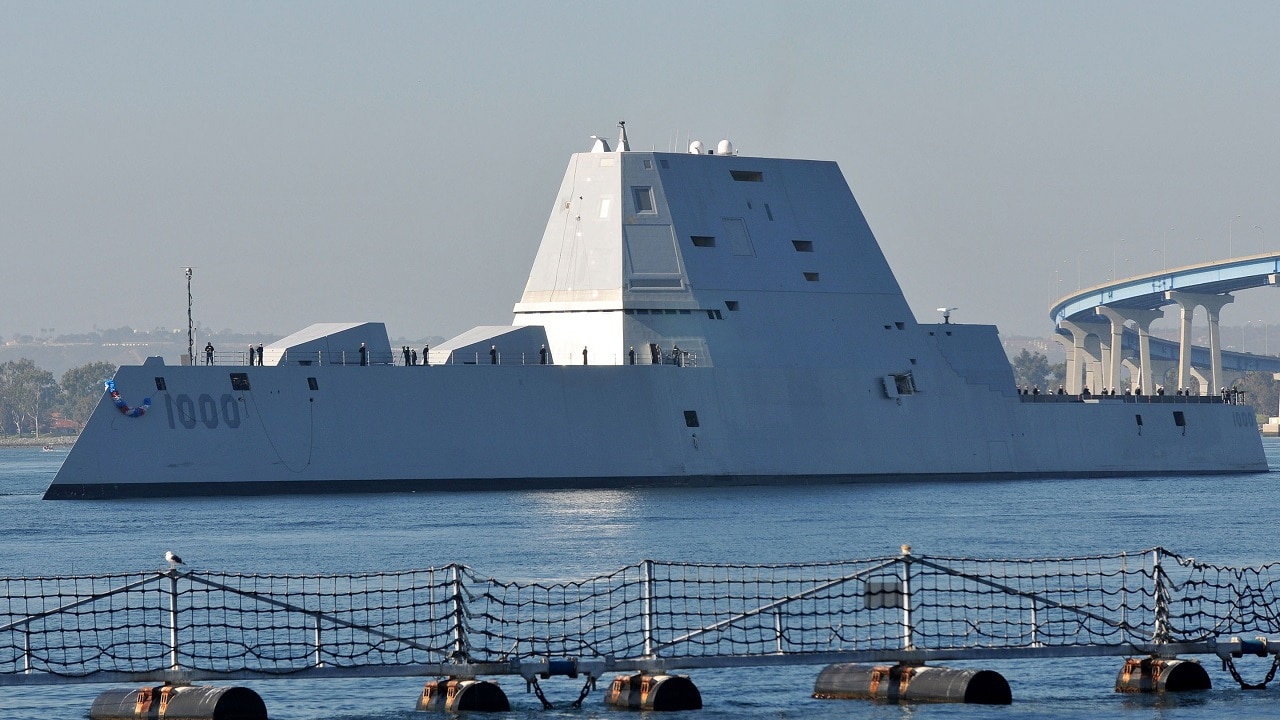The USS Zumwalt has some issues for sure–costs and not having a clear mission. However, do these supposed stealthy destroyers now have a rust issue? The U.S. Navy’s much-ballyhooed stealth USS Zumwalt destroyer looks like it has acne.
There are rust spots covering the ship and it doesn’t look healthy for a once-shiny new vessel. One 1945 analyst has noticed rust not just on the Zumwalt, but on other ships, particularly at Naval Station Norfolk, headquarters of the Atlantic fleet where at least three ships showed rusty spots. Is this a larger problem with maintenance in the navy or just a cost of doing business when conducting surface warfare patrols all over the world?
The Stealthiness of the Zumwalt-class
The USS Zumwalt is the lead vessel of two other Zumwalt-class advanced destroyers that have a distinct shape. The 610-foot Zumwalt-class ships have stealth characteristics from a small radar cross-section that is supposed to give the ships the ability to cruise closer to shore and fire their ordnance without being detected.
The Zumwalt-class ships have a unique look because of their tumblehome hull. This helps with the stealth features. The propulsion system is electric. The Zumwalt name was supposed to be synonymous with the highest levels of technology and the latest weaponry.
Other Modern Features Are Noteworthy
The all-electric ship has dual-band radar. One networked computing system handles all functions on the ship. Two sonar arrays are housed in the hull are designed to help the ship excel at undersea warfare. The MK57 Vertical Launching System handles the missile firing.
Not Smooth Sailing
But the acquisition life cycle has been rocky.
In 2016, the USS Zumwalt had to be towed out of the Panama Canal because it ran aground and its props quit. The navy originally wanted to buy twelve, but the program’s cost ballooned, and it was afflicted with delays. Only three exist. The Zumwalts’ total cost has been estimated at $14 billion.
There are other problems. The hull could become unstable in heavy seas, and it could be detected with low-frequency radar. To keep the radar evasion maximized, the close-in weapon systems were not equipped, and this is dangerous when it comes to defending appropriately against an enemy inbound anti-ship missile.
Expensive Munitions
Other armaments have been controversial. The Zumwalt was supposed to come with two 155mm Advanced Gun Systems. These use precision-guided shells that have a range of 60 miles. This would help prep an area for the marines to conduct amphibious operations.
But the Long Range Land Attack Projectile, a precision-guided munition, costs a whopping $800,000 per round. This is just too high a cost to be used. Even training missions would set the navy back too much. The Department of Defense doesn’t know how to replace it.
The USS Michael Monsoor, another Zumwalt-class ship, is performing various training off the west coast of North America, while the USS Lyndon B. Johnson is conducting builder’s trials.
The Rust Is Embarrassing
Now, about that rust.
This is a problem that shows neglect and even could symbolize larger difficulties with the U.S. Navy’s maintenance procedures.

